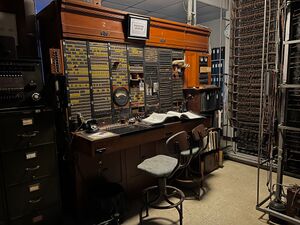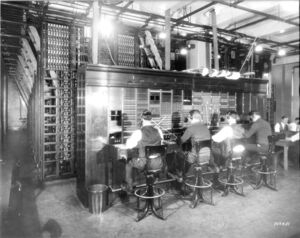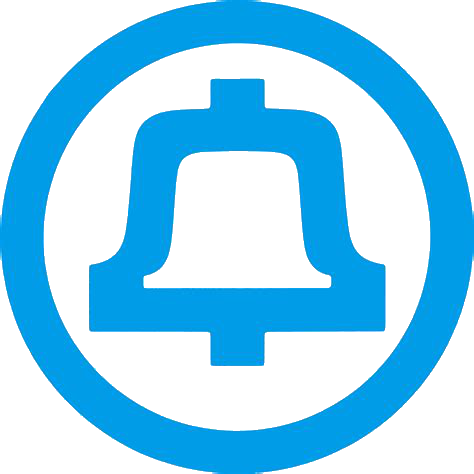Trouble Desk

The Trouble Desk or OGT Desk was a test center for a panel office. It was a wooden desk, similar in appearance to a telephone switchboard, that contained test and make-busy jacks for all of the outgoing trunks in an office. Test workers could insert plug-ended cords into the jacks to test the outgoing trunks.
Depending on the particulars of an office, a trouble desk also may have included a sender make busy section, a floor alarm board, and a permanent signal holding trunk section. The exact types of equipment depended on the age of the panel office, and the specific engineering decisions that were made for the office.
Usage
The desk usually had 2 or more positions, as shown below:
- Trunk Test position - Contained a voltmeter, a desk sender (for placing test calls), plus test jacks and cords for outgoing trunks
- Sender Monitor position - Contained sender test jacks, priming keys, and stuck sender lamps.
- Plugging up area - Customer lines that were intercepted for test or billing purposes appeared here.
- Alarm board - Sometimes part of the sender monitor position, this had lamps and bells for the office alarms.

All sections contained jacks for headphones and keys that could be used to call and speak to other workers in the central office.
Evolution
Early trouble desks were made out of wood and appeared very similar to a switchboard. Starting in the 1930's, the OGT desk took on the appearance of an upright frame, similar to the test frames of later crossbar offices.[1] In fact, the trouble desk, with its associated trunk jacks and sender monitor position would directly evolve into equivalent frames in No. 1 Crossbar and No. 5 Crossbar offices.
